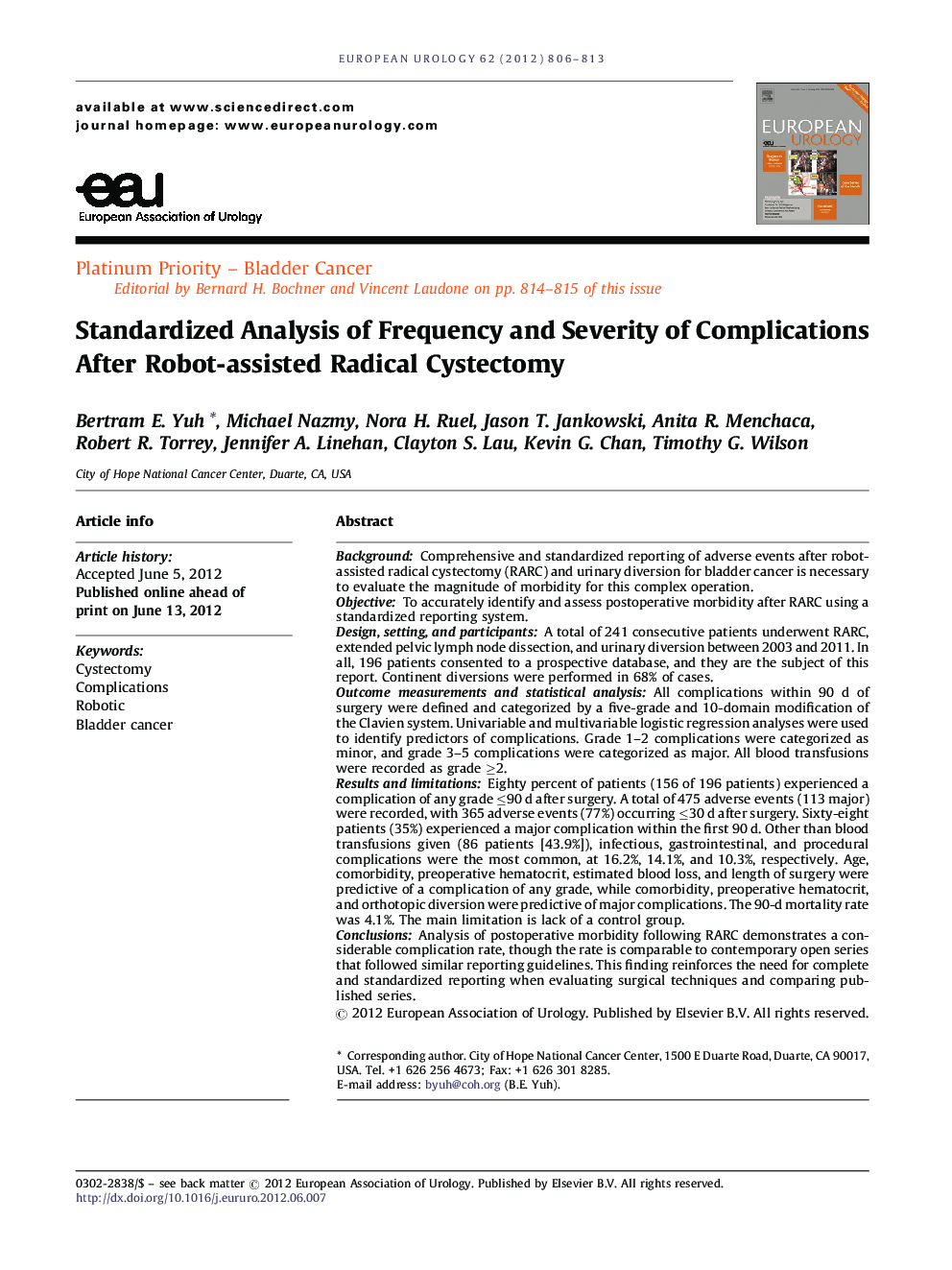| کد مقاله | کد نشریه | سال انتشار | مقاله انگلیسی | نسخه تمام متن |
|---|---|---|---|---|
| 3925687 | 1253133 | 2012 | 8 صفحه PDF | دانلود رایگان |

BackgroundComprehensive and standardized reporting of adverse events after robot-assisted radical cystectomy (RARC) and urinary diversion for bladder cancer is necessary to evaluate the magnitude of morbidity for this complex operation.ObjectiveTo accurately identify and assess postoperative morbidity after RARC using a standardized reporting system.Design, setting, and participantsA total of 241 consecutive patients underwent RARC, extended pelvic lymph node dissection, and urinary diversion between 2003 and 2011. In all, 196 patients consented to a prospective database, and they are the subject of this report. Continent diversions were performed in 68% of cases.Outcome measurements and statistical analysisAll complications within 90 d of surgery were defined and categorized by a five-grade and 10-domain modification of the Clavien system. Univariable and multivariable logistic regression analyses were used to identify predictors of complications. Grade 1–2 complications were categorized as minor, and grade 3–5 complications were categorized as major. All blood transfusions were recorded as grade ≥2.Results and limitationsEighty percent of patients (156 of 196 patients) experienced a complication of any grade ≤90 d after surgery. A total of 475 adverse events (113 major) were recorded, with 365 adverse events (77%) occurring ≤30 d after surgery. Sixty-eight patients (35%) experienced a major complication within the first 90 d. Other than blood transfusions given (86 patients [43.9%]), infectious, gastrointestinal, and procedural complications were the most common, at 16.2%, 14.1%, and 10.3%, respectively. Age, comorbidity, preoperative hematocrit, estimated blood loss, and length of surgery were predictive of a complication of any grade, while comorbidity, preoperative hematocrit, and orthotopic diversion were predictive of major complications. The 90-d mortality rate was 4.1%. The main limitation is lack of a control group.ConclusionsAnalysis of postoperative morbidity following RARC demonstrates a considerable complication rate, though the rate is comparable to contemporary open series that followed similar reporting guidelines. This finding reinforces the need for complete and standardized reporting when evaluating surgical techniques and comparing published series.
Journal: European Urology - Volume 62, Issue 5, November 2012, Pages 806–813